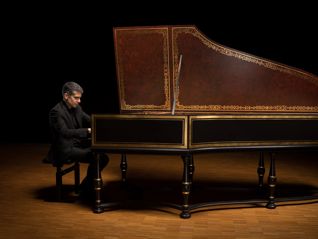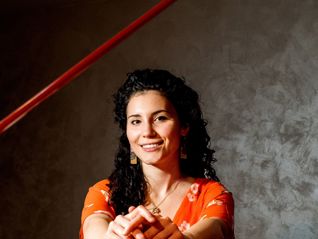
Harpsichord recitals
Harpsichords are no longer silent museum pieces gathering dust behind glass. Since the 1960s, the art of harpsichord building has been revived. The finest copies are now heard on our concert stages – or even in private homes of devoted enthusiasts. Occasionally, we are lucky enough to hear an antique instrument that has been lovingly restored to playing condition. The harpsichord is once again a living instrument, cherished and celebrated.
But there is one notable exception: the 16-foot harpsichord. What’s the story here? Particularly in the German-speaking regions of the eighteenth century, large-scale instruments were built that, alongside the standard 8-foot registers (which sound at normal pitch) and sometimes 4-foot registers (which sound an octave higher), also featured a 16-foot register. This additional set of low-sounding strings expanded the instrument’s bass resonance dramatically. Such instruments are rare, and they are sometimes dismissed as monstrous organ imitations. There has been considerable debate about how common they really were in their time.
We are setting out to challenge this scepticism. A brand-new copy of a German-style 16-foot harpsichord by the Italian-based harpsichord builder Max Doronin will make its debut at the festival. And we will put it to the test: Francesco Cera will perform Das wohltemperierte Klavier on it, followed by performances by Diego Ares, Marco Mencoboni, Arianna Radaelli, and Irene Roldán – a long-awaited rehabilitation of this big brother of the harpsichord family.
Concerts
Stay informed
Register for our newsletter (in Dutch)




